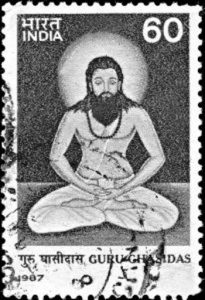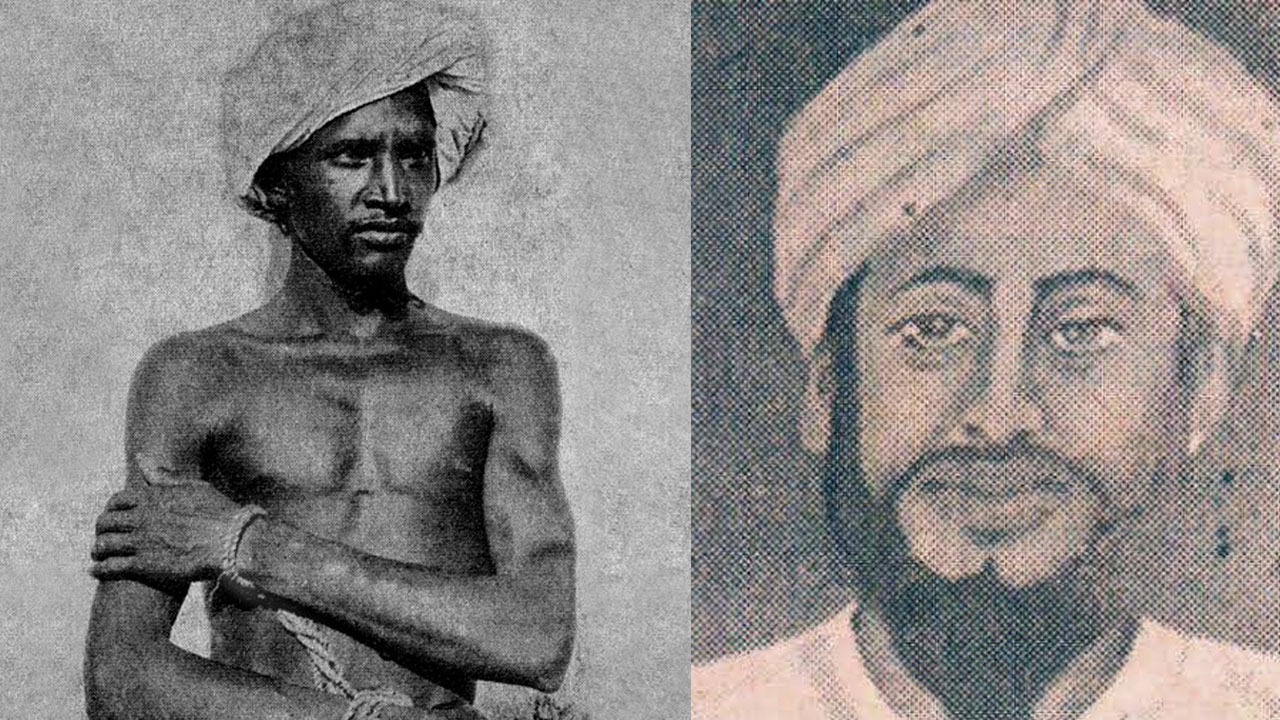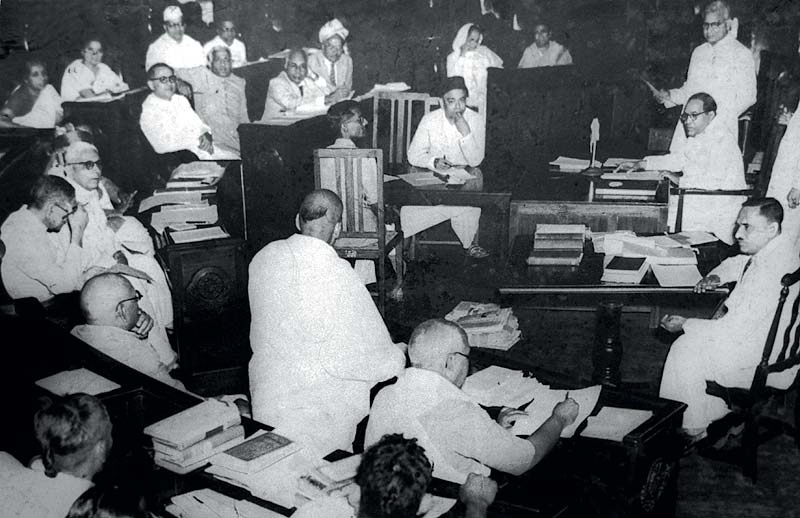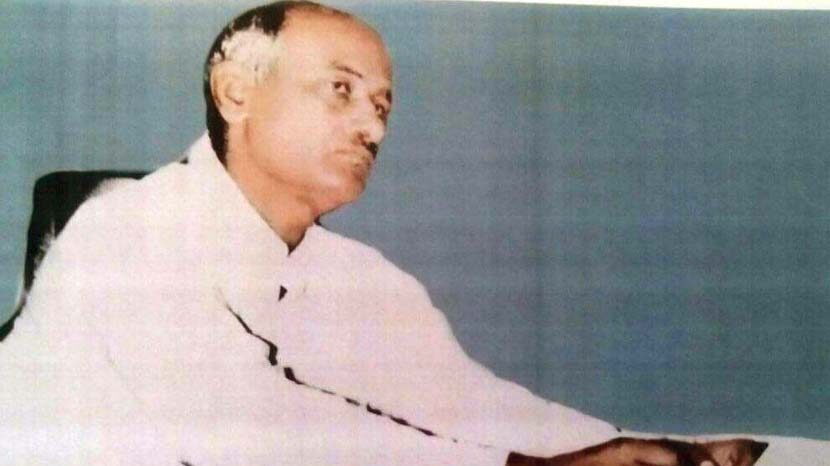On 18 December 1756, an epochal personality was born in what is now Chhattisgarh. His name was Sant Ghasidas. He was the founder of the Satnam Panth in Chhattisgarh.
Guru Ghasidas was born in an era when evils like casteism, untouchability, religious fanaticism and conservatism thrived in Hindu society. Humans were treated worse than animals. Brahmanism was the order of the day. Through his Satnam Panth, Guru Ghasidas hit out at caste-based atrocities, untouchability and the varna system. Not only Dalits but also tribals and a large section of OBCs were drawn to the Satnam Panth. This was the biggest anti-caste movement of the region and a large number of people became its adherents.

Life and times
Guru Ghasidas was born in Giraudpuri village of what is now Balodabazar district. His was a family of humble means. His father was Mehgudas and his mother Amrautin. Ghasidas’ exceptional mind was evident even in his childhood. Casteism did not allow him to seek an education and at an early age, he was married to Safura, who was from Sirpur. Subsequently, Ghasidas abandoned familial life and devoted himself to the service of humanity. He travelled on foot, spreading the message of the Satnam. He spent a large part of his life in Bhandarpuri, Telasi and Chatwadham villages. He delivered his sermons in these villages, which were attended by people of all religions and castes. Impressed by his thoughts, they adopted Satnam Panth. Today, the number of Satnamis is around 4 million. Guru Ghasidas passed away in 1850. The exact date of his death is not known.
Satnam movement
Guru Ghasidas’ movement to make people aware of their rights and the need to assert these rights earned him the ire of the brahmanical forces. Hundreds of thousands of people – mainly the backward Telis, Kurmis, Rauts and Ahirwar – came under the influence of Satnam Panth and adopted it. The brahamincal forces adopted a new stratagem to contain the panth. They crafted new surnames like Ramnami, Suryanami, Suryavanshi and Satnami. All his life Guru Ghasidas assailed the inhuman Manuwadi system of caste, untouchability and varna. He made the common man aware of its evils. Later, his younger son Guru Balakdas took the movement ahead.
It is said that Balakdas was very courageous and tenacious. He started the Rauti system to increase the reach and influence of the panth, and succeeded. The number of members of the panth grew exponentially. Guru Balakdas started wearing the janeu (scared thread) and always carried a sword with him. The idea was to show that merely by wearing the sacred thread or by carrying a sword, one does not become a Brahmin or high-caste. He would say that it was one’s deeds that made one high or low. He also stoutly opposed the Dola system prevalent then and received the full backing of the entire Shudra community in this endeavour. The Savarnas started seeing him as a threat – so much so that they were even ready to eliminate him. Balakdas became the victim of a brahmanical conspiracy. On 28 March 1860, Balakdas was eating at the house of one of his disciples in Aurabandha village and hundreds of Thakurs attacked him. Balakdas, who was unarmed at the time, could not save himself and his two bodyguards Sarha and Jodhai were also killed. Thus Balakdas laid down his life for the Satnam Panth. Though the Satnam movement continues under the leadership of the descendants of the gurus, it no longer commands the following it did in Balakdas’ time.
History
Historians and prominent members of the sect believe that the Satnam Panth was founded in Naurnal district of Punjab. Historical texts mention a Satnami revolt that took place in 1672. During the reign of Aurangazeb, Satnamis migrated from Punjab to different places in north and central India. One of the Satnami families settled in Giraudpuri village of today’s Chhattisgarh, and Guru Ghasidas was born into this family.
 Today, the question is: How did Satnami become a caste in Chhattisgarh? The Satnamis have consistently been opposing class, caste and religious discrimination but today, if a Satnami is asked what his religion and caste his, the answer will be Hindu and Satnami, respectively. Does this mean that Satnamis were assimilated into Hinduism as part of a conspiracy? It is also true that while Satnami is officially a Hindu caste, Savarnas don’t consider Satnamis Hindus. In every village, there are separate ponds, wells and crematoriums for them and they have their own settlements. Even members of lower castes keep a distance and do not visit their houses. Guru Ghasidas worked to remove the distinctions of caste, creed and religion and build an egalitarian society, but today, the Satnamis have been reduced to the lowliest among the low Hindu castes. Why this has happened is a subject matter of research. The Satnamis do not invite Brahmins or pundits on any occasion, including marriages and funerals. Those appointed by the community for this purpose conduct all ceremonies. Satnamis are the only community in Chhattisgarh that has been a bitter opponent of Brahmanism and that tradition continues.
Today, the question is: How did Satnami become a caste in Chhattisgarh? The Satnamis have consistently been opposing class, caste and religious discrimination but today, if a Satnami is asked what his religion and caste his, the answer will be Hindu and Satnami, respectively. Does this mean that Satnamis were assimilated into Hinduism as part of a conspiracy? It is also true that while Satnami is officially a Hindu caste, Savarnas don’t consider Satnamis Hindus. In every village, there are separate ponds, wells and crematoriums for them and they have their own settlements. Even members of lower castes keep a distance and do not visit their houses. Guru Ghasidas worked to remove the distinctions of caste, creed and religion and build an egalitarian society, but today, the Satnamis have been reduced to the lowliest among the low Hindu castes. Why this has happened is a subject matter of research. The Satnamis do not invite Brahmins or pundits on any occasion, including marriages and funerals. Those appointed by the community for this purpose conduct all ceremonies. Satnamis are the only community in Chhattisgarh that has been a bitter opponent of Brahmanism and that tradition continues.
Present form
The Satnami community has progressed but it is still in the grip of Brahminism. Socially and politically, it has become a victim of Savarnavaad. Every year, on the day of Phalgun Purnima, around 400 to 800 thousand Satnamis gather at Giruadpuri, the birthplace of Guru Ghasidas, for a huge fair. Apart from Satnamis, members of other castes and religions also take part in the fair. The government does nothing to facilitate the holding of this fair. On the other hand, the government spends crores on the annual fair held at Mahanadi in Rajim, in which Savarnas gather to venerate brahmanical gods and goddesses. This fair is described as the Kumbh of Chhattisgarh even though the turnout is barely a hundred thousand. In Giraudpuri, a huge column has been erected by the Satnamis at a cost of Rs 560 million. The column is six metres higher than the Delhi’s Qutb Minar, but it finds no mention in the tourism literature of the Chhattisgarh government. No efforts are being made by the government to protect and preserve it.
The government is also tinkering with the Constitutional provision of reservation for the SCs, which has been slashed from 16 per cent to 12 per cent. The government says the SC population of Chhattisgarh is not big enough to warrant 16 per cent reservation. This, when the report of caste census is still awaited, and 42 castes in Chhattisgarh have already been declared SCs, with Satnamis forming the single largest community.
Teachings of Satnam Panth
• Say no to idol worship and temples.
• Soul and god don’t exist and rebirth doesn’t take place
• End casteist discrimination. All humans are equal
• Always speak the truth. Don’t steal, commit robbery or murder
• Simple living, high thinking
• Say no to non-vegetarian food, liquor and all other intoxicants
• Consider the wives of other men to be your mother, sister or daughter
• Be compassionate towards all living things. Don’t make the cow pull the plough. Don’t till after sunset
• Don’t visit temples or go on pilgrimages to attain “moksha”
• Don’t believe what the scriptures say
Published in the February 2016 issue of the Forward Press magazine
For a detailed exposition of the concept of Bahujan literature, read Forward Press Books’ Bahujan Sahitya Ki Prastavna.
Contact The Marginalised Publications to order a copy; phone: 9968527911, email:themarginalisedpublication@gmail.com
The English edition of the book is titled The Case for Bahujan Literature, which is also available with The Marginalised Publication.
To order the books on Amazon, click here and here.
For the e-book version, click here.





